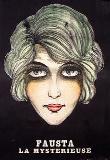Movie time: two reviews
Wallace and Gromit and the Curse of the Were-Rabbit,
Good Night, and Good Luck
 The Curse of the Were-Rabbit starring Wallace & Gromit
The Curse of the Were-Rabbit starring Wallace & GromitAs a long-time fan of Wallace and Gromit (especially a fan of the resourceful, strong, silent Gromit), I highly recommend TCotW-R.
TCotW-R is jam-packed with everything Wallace and Gromit fans enjoy: claymation, toothyness, and English people gardening their little hearts out (I briefly enjoyed Rosemary and Thyme a murder-mystery series highlighting some of the most lovingly-tended English gardens ever seen on TV, but the Philadelphia PBS station only played 5 episodes before cancelling without notice). TCotW-R has all that, plus non-stop action, comedy, adventure, romance, and fun.
My love of puns, double entendres, and sight-gags was more than indulged: When Wallace can’t go down the chute because of his avoirdupois, Gromit, who’s bringing him breakfast, goes right past a jar of marmite that reads “middle age spread”; the Reverend (who has a more-than-passing resemblance to Squidward) sings to his plants "We plow the field and scatter . . .” in his greenhouse, while the figures in the leaded glass cover their ears; the only figure left on the window after it's destroyed is that of Saint George, and on and on.
There’s homage to many old films, such as Harvey, Young Frankenstein, The Wolf Man, the Indiana Jones series, and even a touch of Star Wars (mercifully, no one said, “Gromit, I’m your father”). Early on there’s a tip of the hat to Harry Potter with a photo of Gromit graduating from Dogwarts University.
Leave the kids at home so you don’t miss any of the many details and jokes, and you’ll want to stop for some nice cheese after viewing the film. You can come back later on Halloween with the kids. The movie is safe for all ages.
One brief warning, after we went to W&G I rented Beyond Borders (as part of a Clive Owen movie festival – will post on that later), and Angelina Jolie’s lips have an uncanny resemblance to those of Lady Tottington in TCotW-R. I won’t be able to watch Angelina in anything else without thinking of Tottie from now on.
 Good Night, and Good Luck is in a whole different world, where everything is black and white and smoke-filled. There’s even a full ad for Kent cigarettes. The Anchoress’s brother noticed, too:
Good Night, and Good Luck is in a whole different world, where everything is black and white and smoke-filled. There’s even a full ad for Kent cigarettes. The Anchoress’s brother noticed, too: People who are getting their skirts in a knot over the political shadings of the movie are missing the movie’s real point. It’s really about integrity, and credibility, and seriousness of thought. It’s about how the media explodes and distorts — and how television corrupts. The most consistent and insistent image in the movie is cigarette smoke — people are wreathed in haze, and constantly lighting and puffing. The only ad that is shown in its entirety in the movie is for Kent cigarettes. And yet cigarette smoking is what killed Murrow, and eviscerated a generation who bought into its shallow satisfactions, peddled on the tube. These people will eventually be destroyed by the very thing that supported them and made them rich. It’s really a scathing indictment of the culture that created today’s television news business — and a bittersweet glance at what it once was, and promised to be, and isn’t anymore.Politically, the greatest failing of this film is that the movie simply forgets to mention the fact that the character that commits suicide, Edward R. Murrow’s friend and mentor Laurence Duggan, really was a soviet spy
code-named "19," then "Frank" and finally "Prince."Interestingly, the speaking parts of “good guys” (which means non-Republicans) are played by intense, tense-looking actors, while the Republicans are simply stock-film figures from old newsreels. This has the effect, as Steven Hunter points out, that
He was, moreover, one of many Soviet spies embedded in the U.S. government at the time.
. . . the movie fails to apprehend the true enormity of McCarthy's crime. Not that he hounded a few lefties out of government or made a stink about the odd Red dentist who got a promotion at Fort Dix, but that he forever tarnished by association the reputations of the security services charged with keeping us safe from the actual -- yes, Virginia, there was such a thing -- Red menace. That probably did more to help the Soviet espionage initiative than any State Department document that was ever filched for them.All the same, GN,aGL failed to engage my emotions, and, at times, my interest. It is endlessly wordy, to the point that when there’s one moment of silence I heard myself go “whew!”. Edward R. Murrow repeats the near-mantra "Good night, and good luck" enough times that once the DVD is released someone might develop a drinking game -- one shot for each "gn,agl". Nearly all the scenes are close-ups, giving it an in-your-face feel that denies the viewer the opportunity to maintain a respectful distance. The claustrophobic atmosphere is intensified by all of the action taking place indoors, and nearly all of that is at CBS headquarters, especially in cramped offices and small studios. You almost wish that the characters would step outdoors for a breath of fresh Manhattan smog.
I’ve mentioned before that I'm a fan of black and white cinematography. Good Night, and Good Luck is in B&W, but it is TV-like B&W, not classic B&W cinematography (and early, old-old TV at that). In this, it is hardly unique: about the only film made in the last 25 years that does a really good job of capturing true B&W art is the Steve Martin comedy Dead Men Don’t Wear Plaid in which the new scenes re-created exactly the original B&W cinematographic detail and atmosphere.
Sharp focus is a salient feature in classic B&W cinematography. For example, in the B&W masterpiece The Picture of Dorian Grey, each shot is in perfect focus. You can watch every detail of each scene; when Dorian Grey leaves his coach on the street, you can count each cobblestone, savor each shadow moving through the night. In GN,aGL half the screen is always off-focus. This lack of sharp focus for all on the scene is rather telling: it's as if director George Clooney didn’t trust you to pay attention to the actor speaking while others were in the frame, hence the other guy's totally off-focus.
I did enjoy the tenor saxophone music played by Matt Catingub, and Dianne Reeves's singing, both for their interpretations, and for being the only respite in the smokin’, too-tense, claustrophobic doings.
In all, GN,aGL is interesting for what it chooses to omit rather than for what it presents.










1 Comments:
Damn,
You really must work harder on you ESL class at reading comprehension.
Post a Comment
<< Home